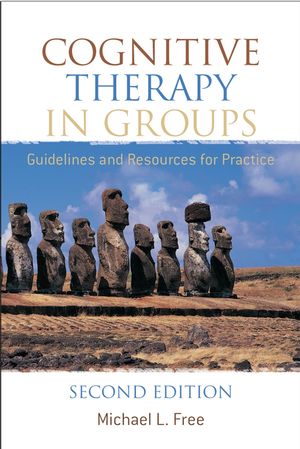Cognitive Therapy in Groups: Guidelines and Resources for Practice, 2nd EditionISBN: 978-0-470-02448-5
Paperback
400 pages
March 2007
 This is a Print-on-Demand title. It will be printed specifically to fill your order. Please allow an additional 10-15 days delivery time. The book is not returnable.
Other Available Formats: Hardcover
|
||||||
Preface to the Second Edition.
PART ONE: PRELIMINARY CONSIDERATIONS.
Chapter One: Introduction to the Program.
The nature of the program.
The search for effective, effi cient and ethical psychotherapy.
The nature of the therapeutic relationship.
Overview of the program.
Chapter Two: Theoretical Foundations.
Background to the theoretical basis for the program.
A general model of disorders.
Beck’s cognitive model of emotional disorders.
Ellis’ Rational Emotive Therapy.
McMullin’s Cognitive Restructuring Therapy.
Young’s Schema Therapy.
The English cognitive therapists.
Conclusion.
Chapter Three: Preparation.
Rationale behind the manual.
Acquiring appropriate resources.
Selecting participants.
Preparing prospective participants.
Assessment considerations.
Understanding the group cognitive therapy manual.
The role of the therapist in psychoeducational group therapy.
Choosing a format.
TREATMENT MANUAL.
Module One: Surface Beliefs and Processes.
Therapy Session One: Group Basics.
Therapy Session Two: Thinking and Feeling.
Therapy Session Three: Logical Errors.
Therapy Session Four: Appropriate Logic.
Therapy Session Five: Countering Logical Errors.
Module Two: Beneath the Surface: Exploring Your Negative Belief System.
Therapy Session Six: A Generic Model of Emotional, Behavioural and Personality Disorders.
Therapy Session Seven: Identifying Negative Schema Content Using the Vertical Arrow Method.
Therapy Session Eight: Advanced Vertical Arrows and Subjective Units of Disturbance.
Therapy Session Nine: Making Sense of Beliefs: Categorising Beliefs and Making Cognitive Maps.
Therapy Session Ten: Making Sense of Your Beliefs: Developing a Cognitive Diagnosis.
Module Three: Testing Your Beliefs.
Therapy Session Eleven: Beliefs Can be Changed and Adversarial Analysis.
Therapy Session Twelve: Challenging Your Beliefs: Investigatory Analysis.
Therapy Session Thirteen: Scientifi c Analysis.
Therapy Session Fourteen: Consolidation of Information.
Module Four: Changing Your Thinking and Feeling.
Therapy Session Fifteen: Countering and Adversarial Debate.
Therapy Session Sixteen: Propositional Perceptual Shift.
Therapy Session Seventeen: Emotional Shift and Schema Content Shift.
Therapy Session Eighteen: Schema Rebalancing and Schema Imagery.
Therapy Session Nineteen: Negative Schema Imagery.
Therapy Session Twenty: Strong-Nurturing-Self Imagery, Re-parenting, Letter-Writing.
Module Five: Changing Your Counterproductive Behaviour.
Therapy Session Twenty-One: Selecting Behaviour to Change.
Therapy Session Twenty-Two: Making a Behaviour Self-Change Plan.
Therapy Session Twenty-Three: Problem Solving.
Therapy Session Twenty-Four: Cognitive-Behavioural Rehearsal.
Therapy Session Twenty-Five: Maintaining Gains.
Appendices.
1. Phone Screening Protocol.
2. Intake Protocol.
3. Information for Prospective Participants.
4. Information for Referring Agents.
5. Individual Work Contract.
6. Overhead Transparency Templates.
7. Worksheets.
8. Handouts.
9. Resources for Participants.
References.
Index.



